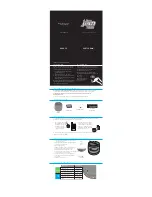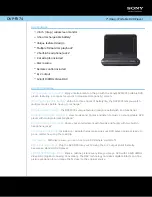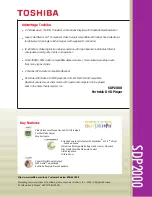
13
2.11 ELECTRICAL SAFETY
1. The generator produces enough
electric power to cause a serious
shock or electrocution if misused.
2. Using a generator or electrical
appliance in wet conditions
(rain or snow), or near a pool
or sprinkler system, or when
your hands are wet, could
result in electrocution. Keep the
generator and the immediate
area dry.
3. If the generator has been outdoors, unprotected
from the weather, check all of the electrical
components on the control panel before
each use. Moisture can cause a short circuit
in electrical components that could result in
electrocution.
4. Do not connect to a building’s electrical system
unless an transfer / isolation switch has been
installed by a qualified electrician.
5. NEVER
tamper with the factory settings of
the engine or engine governor. Engine speed
controls the frequency portion of the electrical
output (60hZ). Personal injury or damage to the
engine or equipment can result if operating in
speed ranges above the maximum or below the
minimum allowable.
2.10 STORAGE SAFETY
1. Store the unit in a well vented area away from
human activity.
2. If possible, store in a dry area, avoid storage
areas with high humidity, because that promotes
rust and corrosion.
3. Avoid any area where power tools are operated
or spark-producing electric motors.
4. Do not allow children to play on or around the
stored machine.
5. Place the generator on a level surface. Tilting or
laying it on its side can cause fuel or oil leakage.
Support the frame with planks if required.
6. Allow the engine / exhaust to cool. A hot engine
and exhaust system can ignite or melt some
materials.
7. With the engine and exhaust system cool, cover
the generator to keep out dust.
8. Do not use a nonporus sheet as a dust cover. A
nonporous cover will trap moisture around the
generator, promoting rust and corrosion.
Z94221
2.9 TRANSPORT SAFETY
1. Comply with Provincial / state and local laws
governing safety and transporting of machinery
on public roads.
2. Do not exceed a safe travel speed. Slow down
for rough terrain and cornering.
3. Do not transport or move the generator with the
engine running.
4. Inspect all access panels and guards to ensure
they are secured.
5. If the generator has been running, allow the
engine to cool for at least 15 minutes before
loading the generator on the transport vehicle.
A hot engine and exhaust system can burn you
and may ignite some materials.
6. Ensure the fuel tank cap is on tight and keep the
generator level when transporting to reduce the
possibility of fuel leakage.
7. Move the fuel valve lever to the OFF position.
8. When using ropes or tie-down straps to secure
the generator for transportation, be sure to only
use the frame bars as attachment points. Do
not fasten ropes or straps to any portions of the
generator body.
9. Do not drink and drive.
10. Just before transport, perform a circle check to
ensure everything is safe and secure.
Summary of Contents for WHS12000
Page 41: ...41...














































